Customers often associate high prices with high-quality products, suggesting that sellers of high-priced products keep the prices high. On the other hand, customers might purchase similar products from a different retailer if any particular product price keeps rising. One would need to analyze vast volumes of data to understand what drives customers’ purchasing decisions. Retail price optimization involves data analysis to understand and predict the behavior of your target customers to different prices of the products.
The competition in the ecommerce and retail industry has skyrocketed ever since the onset of the global pandemic forcing retailers to find different ways to stay competitive and profitable. Pricing optimization can help retailers achieve that.
Think about it this way. There is no concrete reason a customer must choose to shop with you, and typically, they do not have any loyalty towards your brand or products. And so, if you want your online retail business to flourish, you need to keep working on your pricing because it will determine how long you go.
Although, when retail price optimization is brought up, most retailers hesitate because they assume that it means slashing the prices of their products. But, there’s more to retail price optimization than cutting pricing.
Why do retailers need to keep optimizing their product prices?
A survey found that approximately 94% of the shoppers compare product prices while shopping online. This should put into perspective the importance of product price optimization for retailers trying to stay competitive.


Imagine a customer who wants to purchase an Apple watch. What is the first thing the customer would do once they decide on buying a product? They look for options or sellers to buy the product. Now, what becomes a deciding factor when you have more than one seller selling similar products? The customer will check the price of the product on different retail platforms and buy from whoever offers the best deal.
Your pricing strategy can determine the future of your online business. You could be the cheapest buying destination, a marginally overpriced retailer where customers buy luxury products, or an online store that rewards repeat customers.
Product pricing could also affect your customers’ perception of your product or brand. Set the product price too low, and the customers might relate it with poor product quality. Therefore, how you control the positioning of your products is an important part of business strategy.
How can retailers price their products optimally through pricing optimization?
The success of your retail store depends on how carefully you coordinate the pricing, offers, promotions, product assortment, and inventory. While all these factors contribute to higher sales, pricing is the most critical one. Product pricing can impact your revenue and profitability instantly. For instance, if a retailer optimally changes the product pricing on a Friday evening, they might see the profits rolling in the following day.
However, how price changes work today is quite different from how it was done in the early 2000s. When there were fewer innovative tools, pricing was often guesswork based on instincts or simply meant copying what the competitors were doing. But, as time progressed, some sophisticated retailers broadened pricing scope past plain margin management and accommodated more complex pricing factors.
Today, retailers are turning to AI for better pricing optimization and outcomes. Pricing has become more competitive, flexible, and even customized. And AI has been helping retailers make dynamic pricing decisions in real-time. You can start by identifying the Key Value Categories and Key Value Items along with information like cart and transaction data, price perception data, and more.
A McKinsey study shows the combination of forces used by retailers to develop the optimal price for a product.
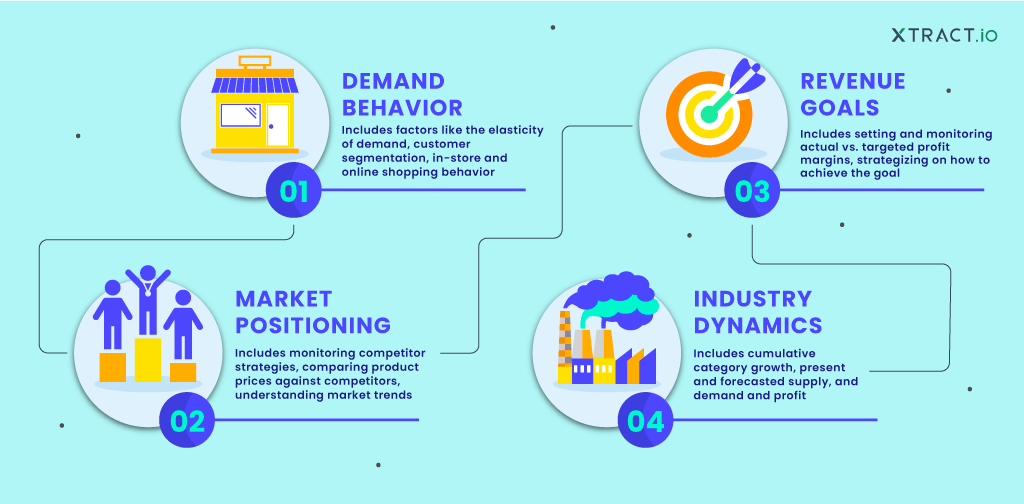
Retail price optimization strategies you can capitalize on
To successfully control your positioning in the market, you must ensure that your pricing strategy is aligned with your positioning and overall objectives.
So how do you optimize pricing strategy for your retail business?
1. Run a detailed competitor price analysis
The first thing you need to start with is identifying where you stand against your competitors in terms of pricing. If you have been in the market for a long time, you already know your competitors. For new retailers, identification of competitors can be the first step. Once you have the pricing data of your competitors’ products, analyze the collected data. The data will enable you to discover patterns in their pricing behavior.
Following are the insights you would be able to derive from this data:
- Competitors for different product categories
- Top competitive products
- The product offers and discounts run by competitors throughout the year
- Better deals offered by suppliers
These insights will provide you with a competitive strength. You will be able to offer the best deal for your products. By tracking your competitors, you will be able to respond to market changes quickly and subsequently develop counter-strategies for the future.
2. Understand your customers’ willingness to pay
Willingness to pay simply means how much customers are willing to spend on your products. This information is crucial when you are introducing a new product into the market or even when you are evaluating the current pricing of your products.
Retailers often set an average price or copy a competitor’s price, or worse, apply cost-plus price. But, neither of these approaches is correct. Although copying the price would be the quickest way to optimize your pricing, you are at the risk of losing as you both have different costs and expected profit margins. Charge price along with your expenses included, and you will eventually lose customers.
To measure your customers’ willingness to pay, you can identify buyer personas’ based on the below factors:
- Location – geographical region, country, state, city, town, etc
- Demographics – age, education, employment, income, etc
- Consumption – purpose, buying volume, frequency
With these, you will determine buyer personas and measure their willingness to pay, enabling you to price your products optimally.
3. Adopt dynamic pricing
Dynamic pricing or surge pricing is where product prices are elastic, changing according to the demand and supply, competitor prices, and other inevitable factors. One good example of a retailer using this powerful strategy is Amazon. Amazon adopted this approach early in the game and still benefits from it.
Ecommerce has changed the world of shopping. We no longer live in times when there would be two electronics stores in the neighborhood to buy from, irrespective of whether they offer a good deal. Today, consumers have the opportunity to search the internet for the best deal provided by multiple retailers.
Ecommerce stores keep changing their prices frequently to attract customers while maintaining repeat customers. These rapid changes have increasingly made the current shoppers price-sensitive. If you can offer them personalization, great customer service, satisfaction, etc., all at an optimal price, you will be able to build a positive brand image and improve customer loyalty.
Pricing optimization can do wonders for retailers
Pricing optimization is feasible for retailers today because of the availability of tools and solutions in the market that can help automate the entire process. Investing in a data-driven competitive intelligence solution will provide you with multiple benefits.
1. Makes managing product catalog easy
A good solution can help you monitor entire catalogs. It will help you manage all the SKUs included in the catalog, monitor their prices, develop pricing strategies, and review pricing recommendations.
This will give you an overview of the catalog. Some retailers adopt the manual approach, resulting in discrepancies as some products and prices are easily missed while toggling around the sheets.
2. Predicts the impact of price changes
As a retailer, you need to be confident in the price changes you plan to make. Although creating such pricing strategies manually might work for you temporarily, you would not be able to grasp the impact of your pricing decisions until they are implemented. And that’s super risky for your business as it may lead to lost profits and lesser margins.
Instead, you can have a solution that enables you to measure the outcome and the impact of your new pricing strategy. You can foresee the effects of your decision even before they are made live on your online store.
3. Enables buyer and location-based customizations
The right buying time and the correct pricing for a product vary for different customers. These purchasing decisions are based on their location, market, shopping behavior, and more. This makes it very challenging to create result-driven strategies manually, primarily when catering to various customers across regions.
With the help of a retail price optimization solution, you can make several pricing strategies based on various criteria. This way, you will satisfy your customers no matter where they are located.
Final thoughts
Maximizing profits just got easier. You are just a click away from transforming your online retail business. Reach out to us and our industry experts would be eager to help you optimize product prices, create roadmaps, and more with our competitive intelligence solution.


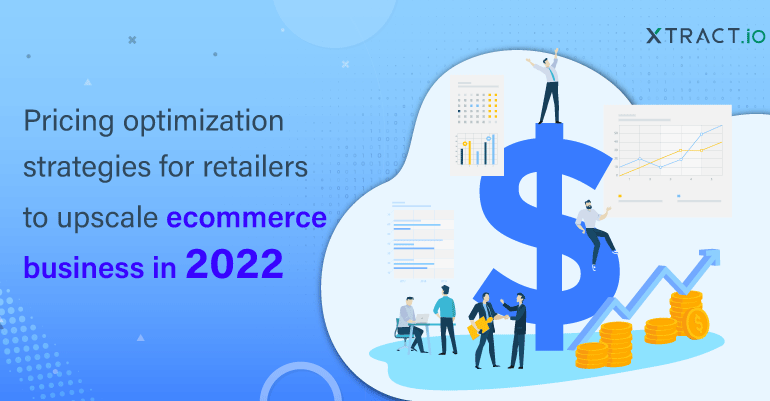

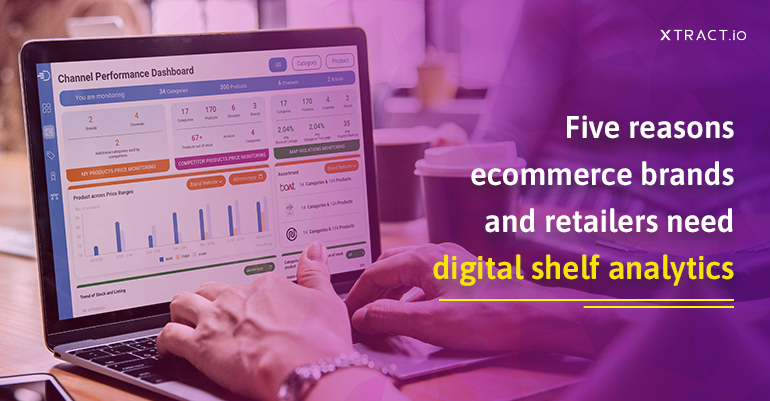
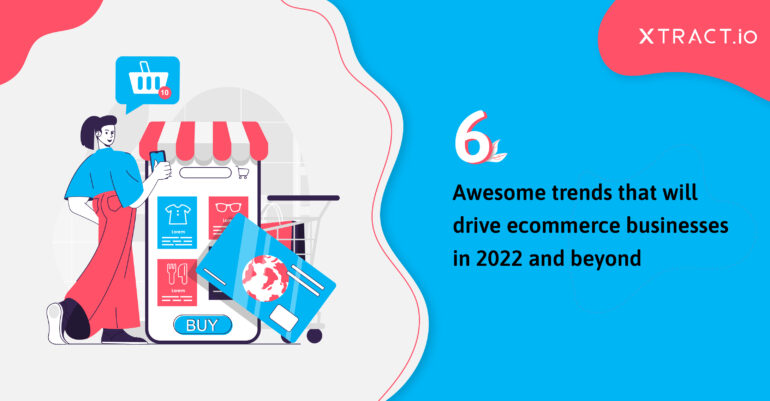
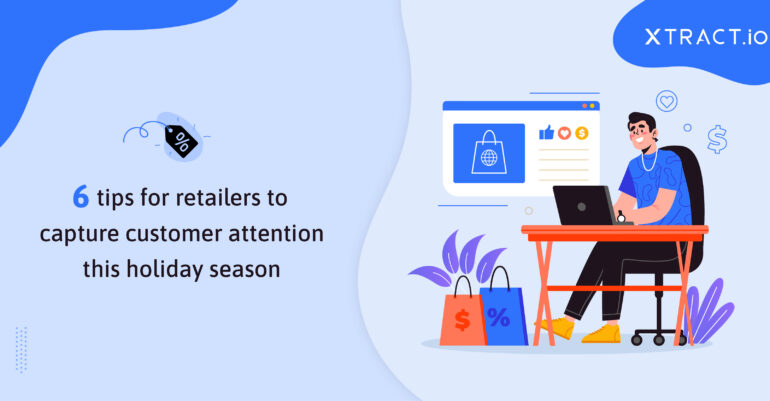

1 Comment
Hello Shruti, This article is really very nice. It is very helpful to retailers to understand how pricing optimization helps in eCommerce business.